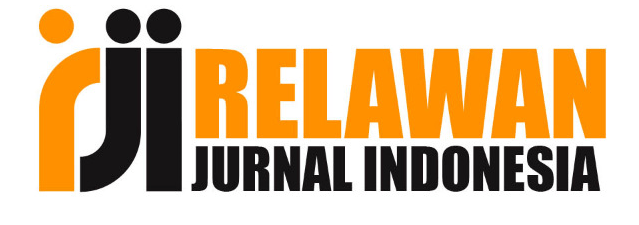FORMULASI DAN EVALUASI SABUN PADAT DENGAN PENAMBAHAN YOGHURT SEBAGAI ANTIOKSIDAN
Abstract
Keywords
Full Text:
PDFReferences
Agoes, G. 2015. Sediaan Kosmetik. Bandung.ITB. Hal. 114-119
Alyazahra R, 2017. Formulasi sedian sabun tranfaran mengandung minyak akar wangi (chyrosogon zizanioides(L) roberty) dan uji aktivitasnya sebagai antibakteri. Bandung: Universitas islam bandung. Hal 122.
Amir, H., dan Maria, M. 2015. Aktivitas Antioksidan Dan Tingkat Penerimaan Konsumen Pada Yoghurt Yang Diperkaya Dengan Ekstrak Sargassum Polycystum. Jurnal Yogyakarta: Universitas Gadjah Mada. Hal 4-5.
Badan Standarisasi Nasional. 2016. Sabun Mandi Padat. SNI-06- 3532-2016. Jakarta: Dewan- Dewan standarisasi Nasional. Hal 5-9.
Barel, A.O., Paye, M., and Maibach, H.I., 2001, Handbook of Cosmetic Science and Technology. 3 rd ed. Informa Healthcare USA, Inc. New York. 6, 485-491, 495-496.
Departemen Kesehatan RI. 1995. Farmakope Indonesia. Edisi IV. Jakarta: Departemen Kesehatan RI. Hal. 896.
Departemen Kesehatan RI. 2014. Farmakope Indonesia. Edisi V. Jakarta: Departemen Kesehatan RI. Hal. 63.
Dungir, S.D., dan Katja, D.G. 2012. “Aktivitas Antioksidan Ekstrak Fenolik Dari Kulit Buah Manggis” Jurnal MIPA Unsard 1(1): 11-15.
Fransworth, N. 1966. Biological and Phoyochemical Screening of Plant. Journal of Pharmaceutical Sciences 55(3): 245-264.
Febriyenti, Sari, L.L., dan Novita, R. 2014. Formulasi sabun transparan Minyak ylang- ylang dan uji efektifitas terhadap bakteri penyebab jewarat. Jurnal sains farmasi & klinis. 1.(1):61-71.
Hafsah dan Astriana. 2017. Pengaruh Variasi Starter Terhadap Kualitas Yoghurt Susu Sapi. Makasar. Universitas Islam Negeri Alauddin Makasar. Hal 6-7.
Hambali, E. A, Suryani., dan Rival M. 2005. Membuat Sabun Transparan. Penebar Plus. Jakarta. Hal 12-13.
Hasruddin, & Pratiwi, N. 2015. Mikrobiologi Industri. Bandung: Alfabeta Hal 103- 105.
Khuluq AD, Widjanarko SB, Murtini ES. 2007. “Ekstraksi Dan Stabilitas Betasianin Daun Darah (Alternanthera dentata) (Kajian Perbandingan Pelarut Air:Etanol dan Suhu Ekstraksi)” Jurnal Teknologi Pertanian, Vol 8 No.3 (Desember 2007) 172-181. Hal 4
Legowo, A. M., S. Mulyani dan Kusrahayu. 2009. Teknologi Pengolahan Susu. Semarang : Universitas Diponegoro.
Malo, Sanan Shoro. dan Fakhir Omar Mohammed. 2017. “The Use Of Euphemism and Dysphemism in Bahdeni Dialect.” Journal of University Duhok 17(1):1-14.
Molyneux, P. 2004. “The Use of The Stable Free Radical Diphenylpicryhydrazil (DPPH) for Estimating Antioxidant Activity.” Songklanakarin J. Science Technology 26(2): 211-219.
Nihayah, Ifratun. 2015. “Pengaruh Konsentrasi Starter Terhadap Kualitas Susu Sapi dan Pemanfaatannya Sebagai Penurun Kadar Kolesterol Mencit (Mus musculus).” Skripsi jurusan biologi fakultas sains dan teknologi. Malang: Universitas Islam negri.
Ni Wayan, S. A. dan Agustina, H. 2017. Karakteristik Dan Aktivitas Antioksidan Sabun Padat Transparan Yang Diperkaya Dengan Ekstrak Kasar Karotenoid Chlorella Pyrenoidosa. Bogor : Lembaga Ilmu Pengetahuan Indonesia (LIPI). Hal 20-21.
Sayuti, K. 2010. Mempelajari Mutu Yoghurt pada Lama Penyimpanan dan Jenis Bambu yang Berbeda. Padang: Thesis Pasca Sarjana Fakultas Pertanian. UNAND.
Shori, A. B. dan A. S. Baba. 2011. Viability of lactic acid bacteria and sensory evaluationin Cinnamomum verum and Allium sativum-bio-yogurts made from camel and cow milk. J. of the Association of Arab Universities for Basic and Applied Sciences11: 50–55.
Spitz, L. 2016. Soap Manufacturing Technology. 2nd ed. Amerika Oils Chemists’ Society Press. Amerika. Hal 50.
Sukawaty, Y., H. Warnida, A.V. Artha. 2016. Formulasi Sediaan Sabun Mandi Padat Ekstrak Etanol Umbi Bawang Tiwai (Eleutherine bulbosa (Mill). Urb.). Media Farmasi Vol. 13 (1): 14-22.
Susilorini, T. E. dan Sawitri, M. E. 2007. Produk Olahan Susu. Jakarta : Penebar Swadaya. Hal 70-72.
Rowe, R. C., Shesky, P. L,. dan Owen, S. C. 2009. Handbook Pharmaceutical Excipients. 6th Ed. London: The Pharmaceutical Press and The American Pharmacist Association. P. 110-112, 283-285, 637-639, 648- 650, 767-769.
Rengku PM, Ridhay A, Prismawiryanti. 2017. Ekstraksi Dan Uji Stabilitas Betasianin Dalam Ekstrak Buah Kaktus (Opuntia elatior Mill.). Jurnal KOVALEN, 3(2):142-149, Agustus 2017. Hal. 6
Yuslianti, Euis Reni. 2018. Penangkal Radikal Bebas dan Antioksidan.Yogyakarta: Deepublish. Hal. 2-7
Wahdaningsih, dkk. 2011. “Aktivitas Radikal Bebas dari Batang Pakis". Jurnal. Tanjungpura”. Universitas Tanjungpura. Hal. 2.
Widowati, S., dan Misgiyarta. 2016. Efektifitas Bakteri Asam Laktat (BAL) dalam Pembuatan Produk Fermentasi Berbasis Protein/Susu Nabati. Balai Penelitian Bioteknologi dan Sumber Daya Genetik Pertanian. Prosiding. Hal 9-10.
DOI: http://dx.doi.org/10.52031/phrase.v3i1.518
Refbacks
- There are currently no refbacks.




